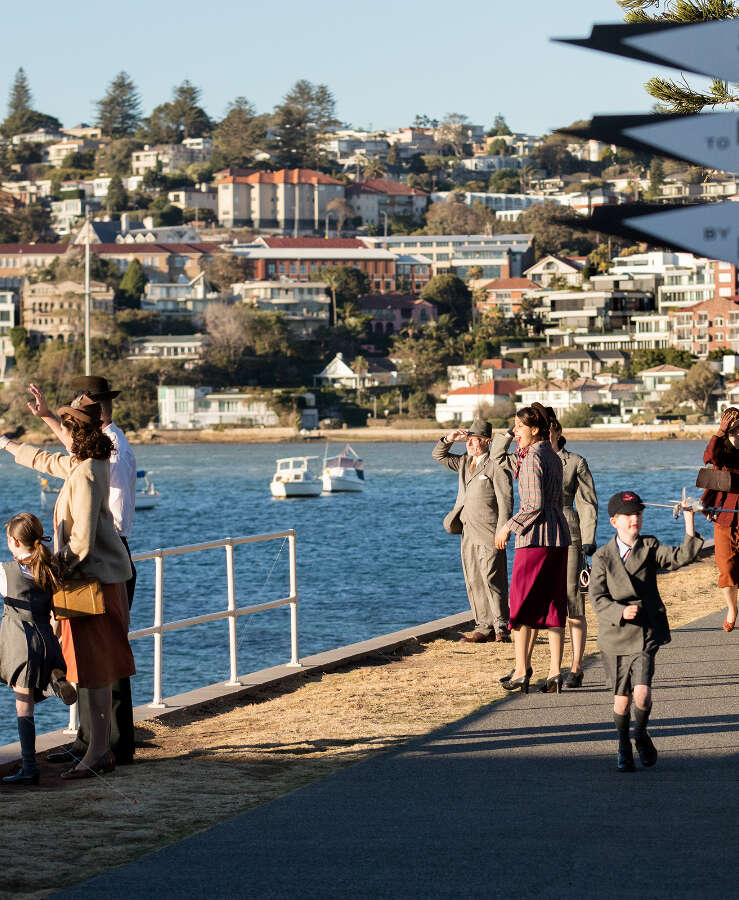A Century of Safety
This is no ordinary safety video – that’s for sure. ‘A Century of Safety’ spans 10 decades and showcases some of the moments that have made Qantas the world’s safest airline. Months were spent researching and recreating the aircraft, uniforms and locations, and there are more than a few subtle nods to important people and places along the way.
This video celebrates that safety has always been and will continue to be our number one priority. And as we fly towards the future together, we look forward to ensuring it's a safe one.
‘A Century of Safety’ began showing on all Qantas flights in March 2020.
Making the video
From shooting at the original Qantas Hangar at Longreach to sourcing genuine tea sets from the 1940s and retrieving Boeing panels from the Mojave Desert to recreate the 1970s upper deck, each scene is historically accurate to the last detail to truly transport passengers through the ages.
Keeping with the Qantas tradition, every pilot, engineer and crewmember character shown throughout the video was played by a current Qantas employee serving in a corresponding role – Kane, a current QantasLink Dash8 pilot played the Avro pilot from the 1920s; Allison, a current Qantas engineer can be seen at Sydney’s first international airport in the 1930s; and Chelsea, a current Qantas crewmember stars in the vivid red uniform of the 1960s.
Peter Allen’s ‘I Still Call Australia Home’ has also been adapted to suit each decade and the result was ‘I Still Call Australia Home’ reimagined in 1920s ragtime, the big band sound of the 1940s, jazz of the 1950s, and stadium rock of the 1980s.
Rose Bay
Qantas flying boats began flying to Singapore in 1938 making Rose Bay Sydney’s first international airport.
Qantas Empire flying boats introduced full cabin service with meals and drinks for up to 15 passengers.
1950s
Super Constellations operated the first Qantas trans-Pacific service to San Francisco in 1954.
Designed by Qantas engineer, George Roberts, this special set of motorized airstairs was built to accommodate for bigger, taller aircraft so that ground staff could fix them into place safely. Prior to this, airstairs were moved on wheels and positioned manually.
1960s
The Qantas ‘coral’ mini-skirt uniform was introduced in 1969.
Nancy-Bird Walton was the first Australian woman to be employed as a commercial pilot.
1970s
A new brightly-coloured Emilio Pucci female cabin crew uniform was introduced in 1974. It was the first crew uniform without a hat.
The upper deck First Class lounge was styled to represent a ship’s cabin from the late 18th century.
1980s
The Yves St Laurent blue cabin crew uniform featured ‘mix and match’ elements, including woollen cardigans.
The iconic red and white Kangaroo logo hopped on board in 1984.

2000s
The distinctive Wirriyarra print Qantas cabin crew uniform was designed by Balarinji. It featured brown and red colours when introduced in 2003 and later changed to silver and blue.












